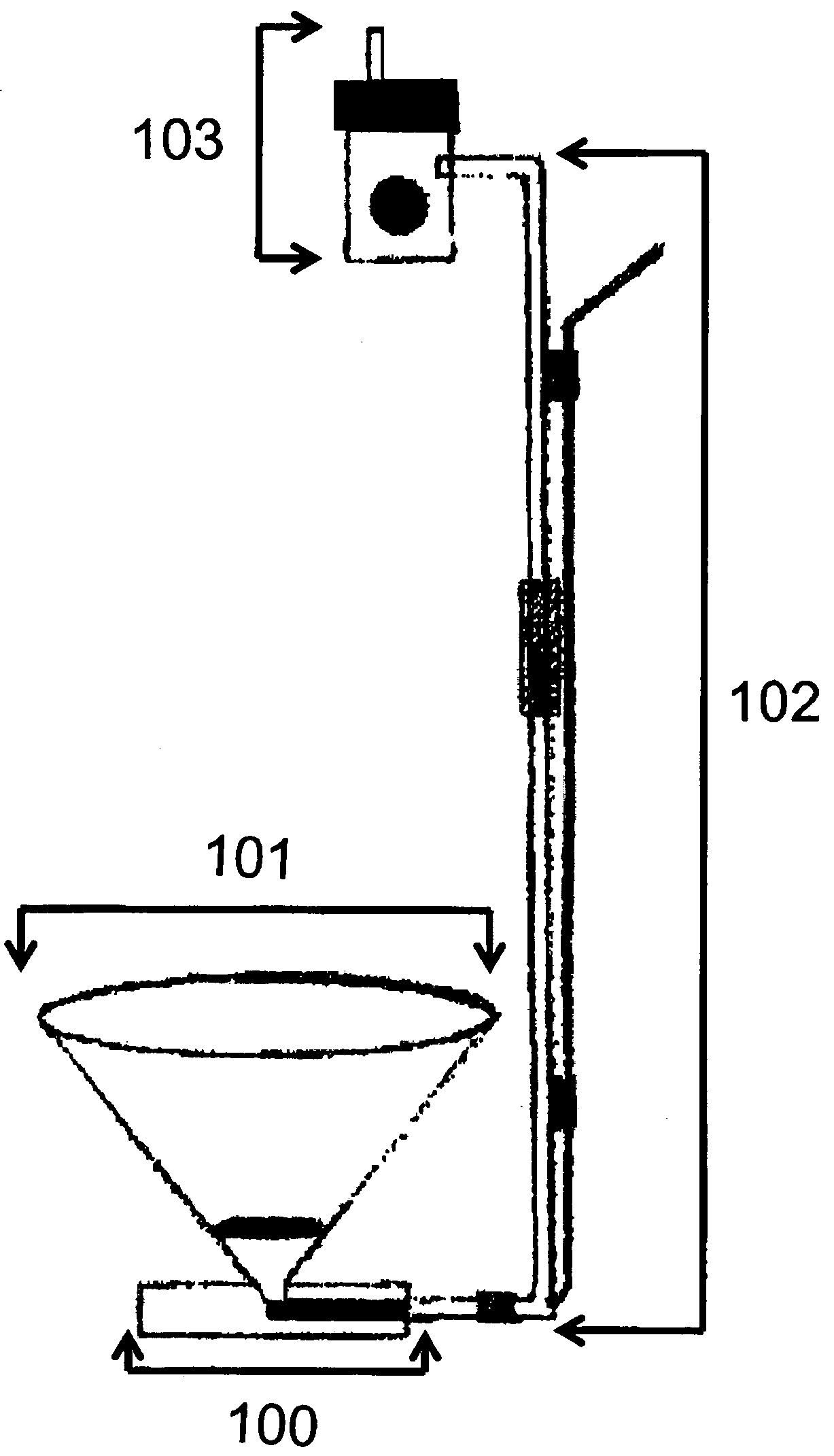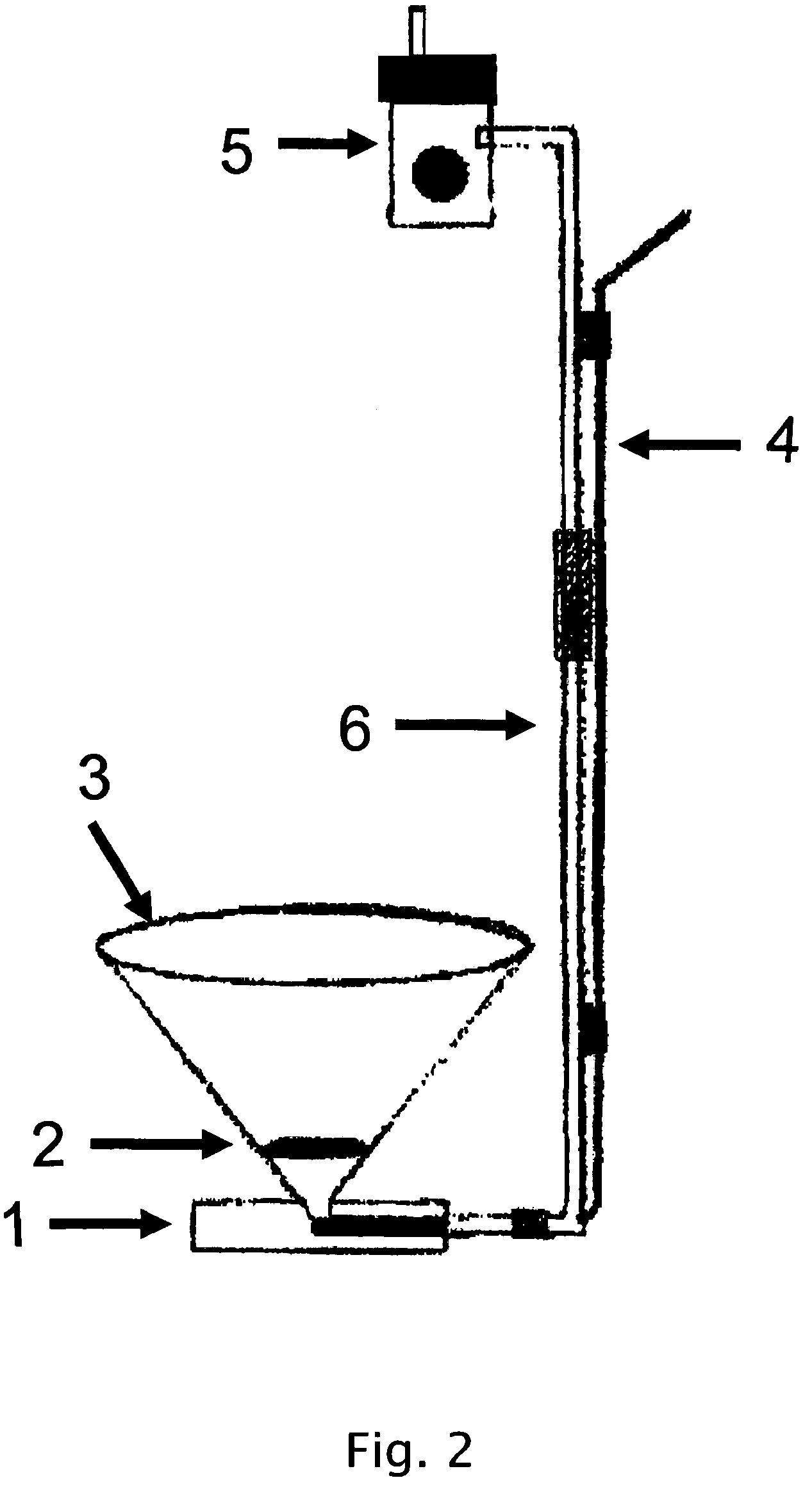Aquatic animal egg collection apparatus, and method of use
a technology for collecting apparatus and animals, applied in pisciculture, aquaria, climate change adaptation, etc., can solve the problems of egg layers, techniques that work well, limitations, etc., and achieve the effects of reducing the number of collectors
- Summary
- Abstract
- Description
- Claims
- Application Information
AI Technical Summary
Benefits of technology
Problems solved by technology
Method used
Image
Examples
example 1
[0084]Experiments were conducted to fine-tune and modify the Aquatic Animal Egg Collection Apparatus to maximize its effectiveness. A wide range of commercially important egg laying species of tropical fish were tested with this device, and modifications were made as necessary to improve its effectiveness.
[0085]The Aquatic Animal Egg Collection Apparatus was first developed to spawn Synodontis petricola, an African catfish from Lake Tanganyika. As a group, Synodontis catfish are highly valued and not much is known about their breeding behavior. As a result, most of the Synodontis catfish in the trade are wild caught and therefore expensive.
[0086]Some of the first breeding successes for S. petricola were reported about three years ago. It was discovered that S. petricola deposited its eggs in caves by egg-scattering. Culturists were using clay flowerpots with a hole or notch cut out of it. The flowerpot was inverted over a dish of marbles. The fish would enter the flowerpot and scatt...
example 2
[0095]Spawning trials with some of the larger, more active species, such as, the Congo tetra and the Tanganyikan Pearl Killifish resulted in the development of a larger, rectangular shaped Egg Collector container. In this embodiment, the sloped sides of the funnel were replaced by two flat pieces of Plexiglas attached to a Plexiglas box at an angle of 30 degrees or greater. The egg transporter tube was bent into the shape of an “L”, and the horizontal section was along the bottom in the gap formed by the two angled pieces of Plexiglas. Holes were drilled into this section of the tube at ½″ intervals providing a way for the eggs to pass into the egg transporter tube.
[0096]The two collecting plates were attached at an angle of 30 degrees. This proved satisfactory for species with large eggs, such as, the Tanganyikan Pearl Killifish. Smaller eggs, such as those produced by the emperor tetra, needed a steeper angle since this slope was not steep enough to cause all of the eggs to roll d...
example 3
[0097]Improvements were made to the original funnel shaped Egg Collector apparatus. In the first two devices, a clay flowerpot and a small plastic bucket were used to hold the funnel upright. These devices proved to be unwieldy, so the weighted plastic base of a Hydrosponge filter was modified to hold a funnel. These devices were much more streamlined and easier to use.
[0098]Early versions of the funnel-shaped Egg Collector apparatus used plastic funnels. These funnels were fabricated from an opaque plastic material. Two embodiments of the funnel-shaped Egg Collector apparatus were developed. The larger one, with an opening measuring 8″ in diameter, had sides sloping at an angle of 45 degrees. A slightly smaller device with a steeper slope of 60 degrees was also constructed. A big advantage was constructing both of these devices from Plexiglas. Both devices were constructed with clear Plexiglas, which made observation possible of any collected and accumulated eggs.
PUM
 Login to View More
Login to View More Abstract
Description
Claims
Application Information
 Login to View More
Login to View More - R&D
- Intellectual Property
- Life Sciences
- Materials
- Tech Scout
- Unparalleled Data Quality
- Higher Quality Content
- 60% Fewer Hallucinations
Browse by: Latest US Patents, China's latest patents, Technical Efficacy Thesaurus, Application Domain, Technology Topic, Popular Technical Reports.
© 2025 PatSnap. All rights reserved.Legal|Privacy policy|Modern Slavery Act Transparency Statement|Sitemap|About US| Contact US: help@patsnap.com



